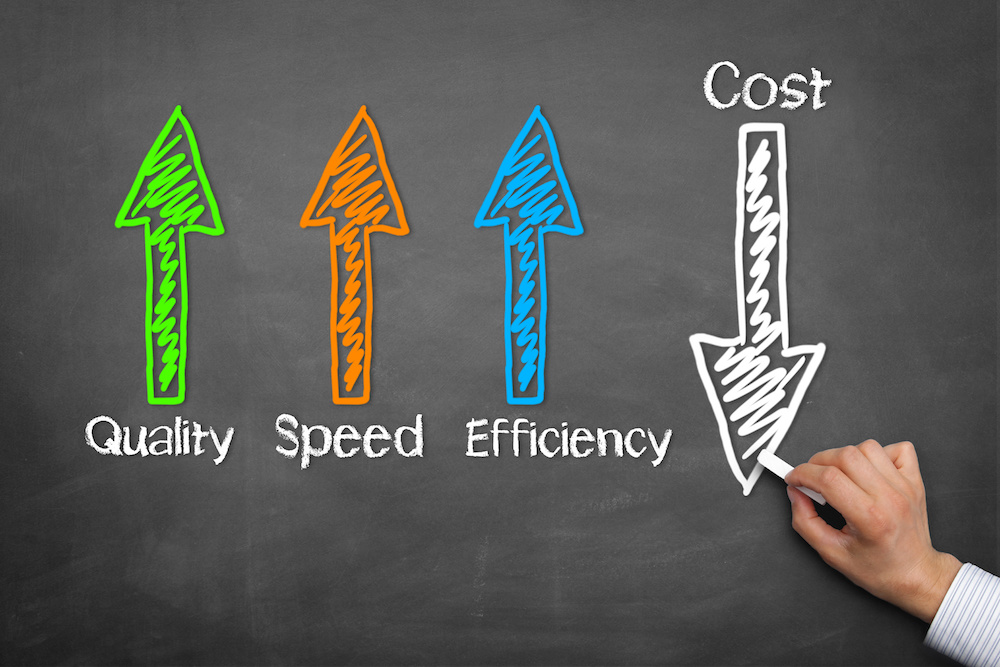This is the fourth in a series on omni-channel contact center communications in the cloud. This post will focus on how to implement an omni-channel strategy.
Have you been worried that an omni-channel strategy had to be implemented in one massive project? It turns out that isn’t the case. You don’t have to do the migration all at once. A more pragmatic approach is to analyze your customers and your business, and then implement a phased approach. In this section of our series, we’ll discuss some recommended best practices for implementing an omni-channel strategy.
Step One – Create Customer Personas
A key first step in your omni-channel strategy is to look at the users of your contact center systems: agents, supervisors, managers, and customers, and their communication needs with others in the organization. You can work with your marketing department and your call center IT team to gather as much historical data as possible. This step will help you determine which users are a priority to move now, and which users can be moved later.
The type of data you want to look at includes:
- Age
- Geography
- Level of technical sophistication
- How they contact you: land lines, mobile phones, tablets, or desktop computers
Define your standard user profiles before you focus on any outliers. You also want to take in to account any upcoming strategic initiatives. If your target customer profile is likely to change within the coming two to five (or even five to ten) years, that should be included in how your prioritize your move to omni-channel distribution.
Step Two – Analyze Call Resolution and Customer Satisfaction Data
Once you’ve created your customer personas, the next step in creating your omni-channel strategy is to analyze your customer interactions.
To analyze your customer interactions:
- Review any surveys you’ve done
- Listen to voice recordings
- Analyze text interactions from email and chat
- Review any customer interaction reports you may have
As you analyze this customer interaction data, look for particular problems or trends that an omni-channel strategy could solve. For example, you might determine that there is an upward trend in customer chat interactions, and you could increase customer satisfaction by adding more channels. If your customers are getting more mobile, you might want to prioritize mobile channels. Look at this as an opportunity to rewrite the rules of how you interact with your customers.
In addition to customers, you also want to look at what can help your agents be more productive. Is each agent dedicated to one channel, would they be more productive if handling multiple channels? If handling multiple channels today, do they have to jump between applications? You could discover that agent productivity could benefit from a more integrated UI across channels, or that more access to cross-channel customer interaction data would help increase first call resolution.
Step Three – Prioritize Channel Rollout
Armed with your customer personas and your customer interaction analysis, the next step in your omni-channel strategy is to prioritize channel rollout. You probably don’t want to implement all the channels at once, as that can easily turn into a bigger and more difficult proposition. The better option is to pick the channel that is going to give you the most bang for your buck in customer experience and agent productivity, and you know which channel that is because you did the upfront work in steps one and two. Now you are ready for step four.
Step Four – Prioritize Subset Teams within the Contact Center
Now that you have picked a channel or two to prioritize, you need to do a pilot rollout. A pilot rollout will help you learn how to onramp agents, how the new channel works for your customer, and how it maps to your business. It also lets you work out any kinks in the rollout process before you implement it for your entire company. The pilot rollout can be done by site, team, product line, or function (sales, service, etc.) – whichever is best suited to your company and product.
Once you’ve done your pilot, you can take what you’ve learned and methodically roll out the new channels to other teams. Another option would be to convert one team to all the channels, and then convert future teams. Either way, over a year or two, you will have converted the entire contact center to an omni-channel strategy for your customer interactions.
Step Five – Pick the Right Vendor for Your Omni-Channel Strategy
Of course, you have to pick the right vendor for your omni-channel strategy to work. So another part of your homework is to know what to look for in a vendor. First, they should support all the channels you want – email, chat, SMS, voice, and social. Make sure they have strong cross-channel analytics, so you can track how you are doing, where you need to improve, and if you need to emphasize one channel over another as your business evolves.
Other things to look for in an omni-channel contact center vendor include whether they have cross-channel customer interaction data available to agents. That way, if a customer contacts you on the same or a related issue on another channel, your agent has that information at hand, and the customer does not have to repeat it. This helps you provide the optimum customer experience.
You should strongly consider the cloud. The cloud provides inherent flexibility with regard to network, location, and device choices. As technology changes more quickly than ever, a cloud omni-channel strategy will help you keep up with ever-changing customer demands and preferences. The innovation you get from cloud service providers ensures a continual, non-disruptive upgrade environment, because your cloud provider takes care of all future upgrades.
We think you will find that migrating your call center to an omni-channel strategy will benefit you now and in the years to come.
Read more about doing a phased migration to the cloud using the Hybrid Cloud Contact Center approach.








